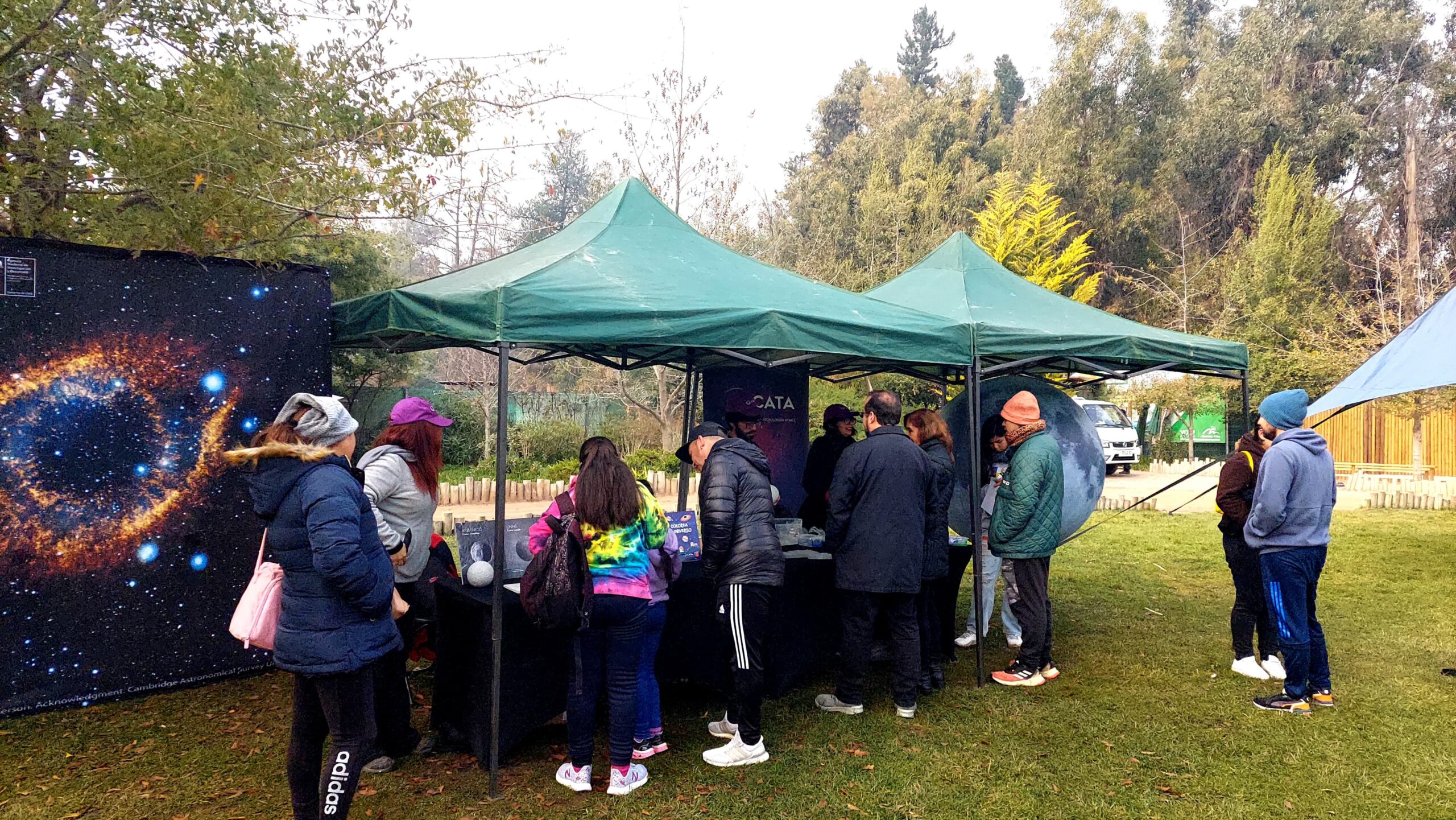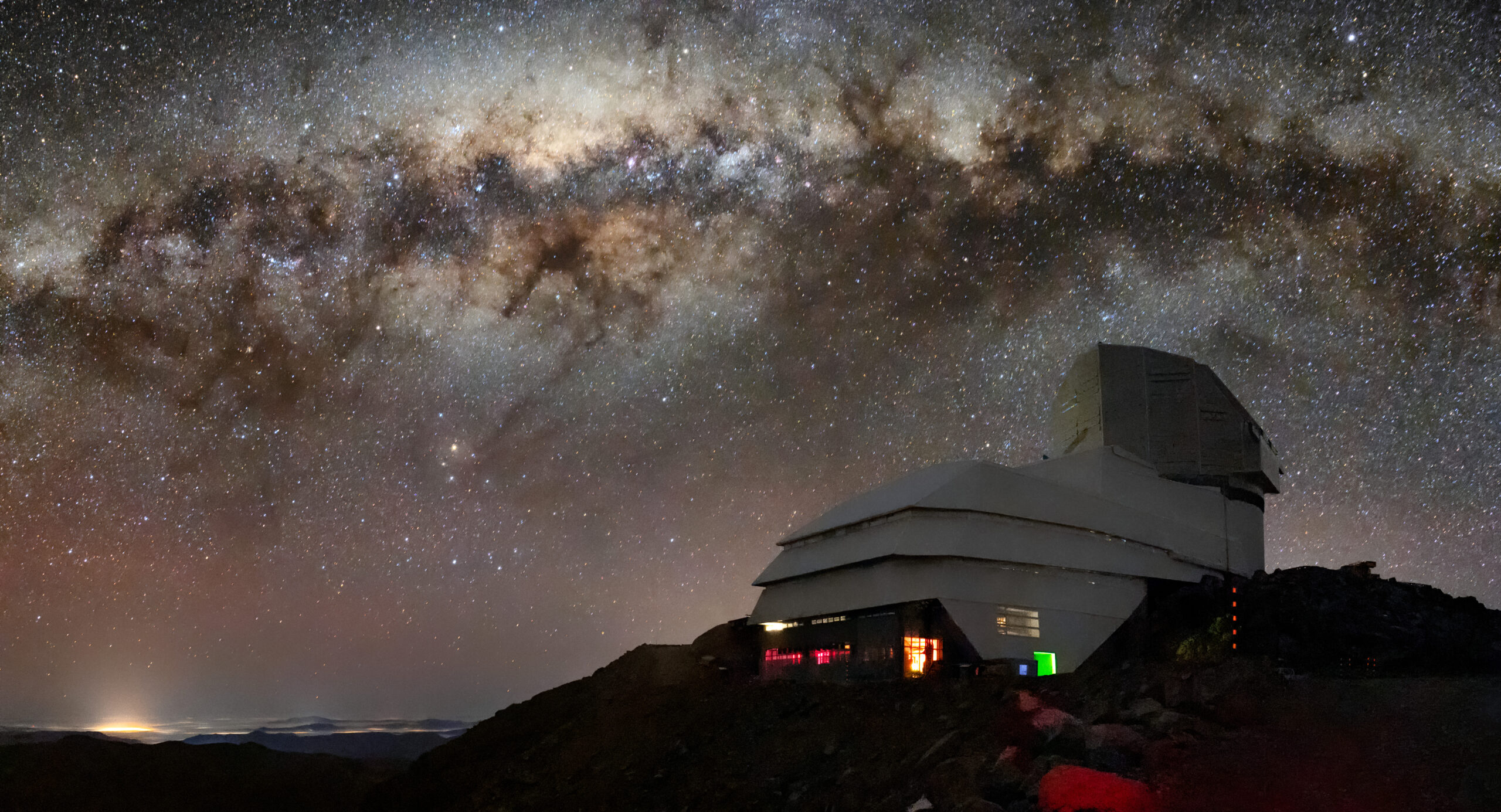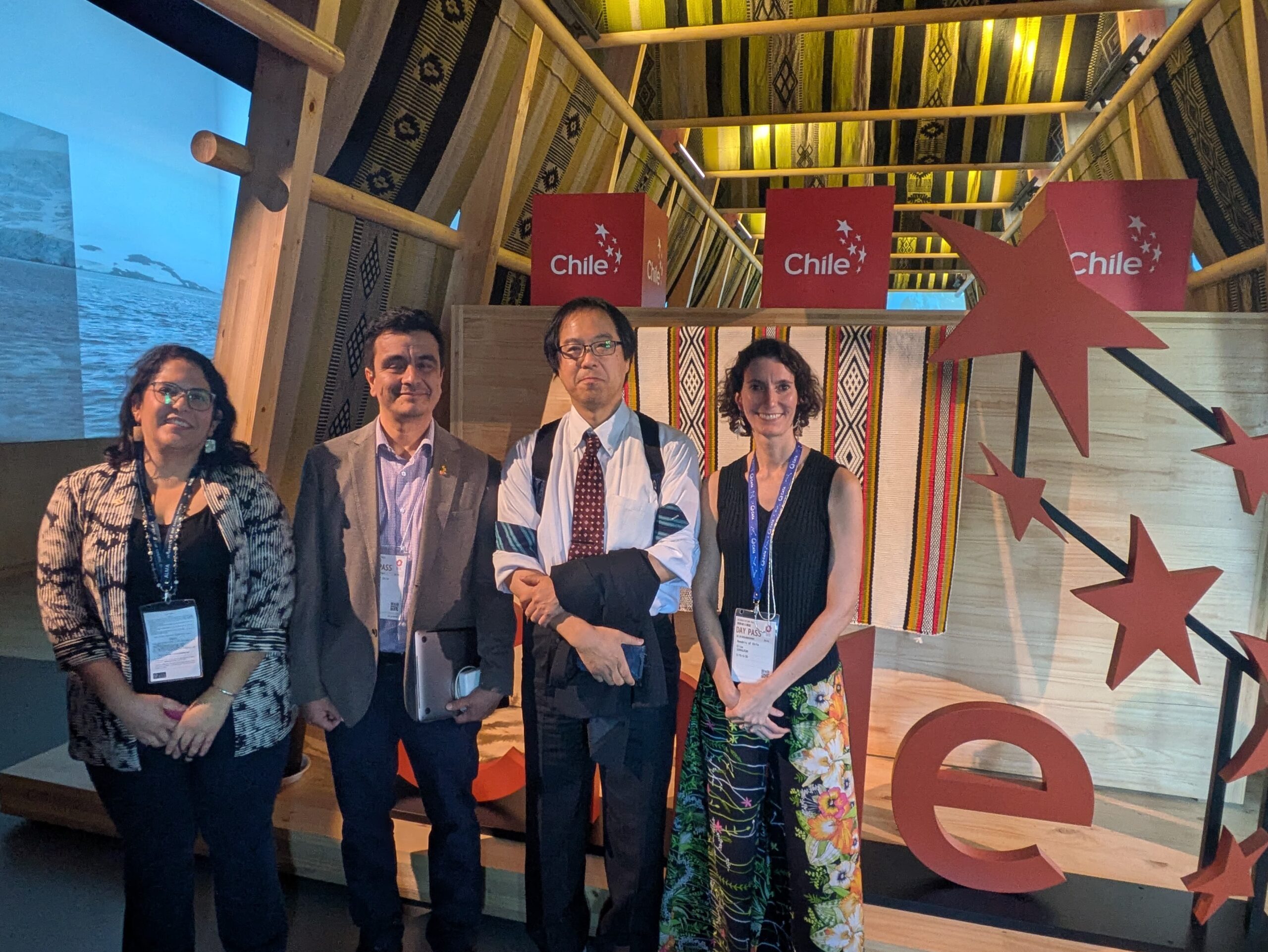
CATA Corporation will seek to increase astrophysical research and enhance technology transfer development
This new legal figure will complement the work already done by the Basal Project funded by ANID and will aim to incorporate and coordinate the main institutions involved in research, teaching and dissemination of astrophysics in the country, together with the development of related technologies that will benefit society.
After a successful development process of almost two decades, the Center for Astrophysics and Related Technologies, CATA, began a new stage with the implementation of a Corporation whose objective will be to further enhance its role as a world-class entity in research and technology transfer.
Under the legal status of a private, non-profit corporation, CATA will seek to further enhance frontier research in astrophysics, providing training to graduate students, postdoctoral fellows and technical engineers at the highest level of excellence, disseminating its work, along with supporting the development of new technologies that will directly benefit industry and society according to their needs.
During all these years we have been able to install the capabilities that will be enhanced with this new institutional framework. The Basal Project will continue to be its central axis, but many actions can be developed in parallel, since the Corporation offers the legal framework for a more efficient execution. With the consolidation of the new figure of CATA, a fundamental step in the maturity of the project is generated.
“The objective of this new Corporation is to carry out quality developments based on astronomical research and that all its members make their knowledge and expertise available to industry and society based on the collaborative work provided by each of the institutions that make up the CATA Corporation. This will allow us to generate the development of technology transfer, bearing in mind the needs of the industry to solve the difficulties of the moment”, explains Ezequiel Treister, President of the CATA Corporation and Director of the CATA Basal Center.
Potential growth
The Corporación Centro de Astrofísica y Tecnologías Afines was initially formed by the Universidad de Chile, the Pontificia Universidad Católica de Chile, the Universidad de Concepción and the Universidad Diego Portales. However, the objective is to gradually incorporate more actors from academia and other organizations linked to the development of astronomy, astrophysics and related technologies at the national level, in order to create a stable network of collaboration. An example of this is that CATA, as a Basal Project, currently has 60 scientific members from 13 universities in the country.
“There is tremendous potential in terms of technology transfer. We know of great developments that have a base in astronomy applications, such as WiFi, image synthesis of magnetic resonance imaging and GPS, to mention a few. We could find others that could emerge from our Corporation. We have the capabilities in place and, now, we must find the right challenges to be able to generate those breakthroughs. I am convinced that our equipment will generate important developments and we are already working very closely with industries that need our help and where we, too, can learn from them to generate this profound impact”, explains Elise Servajean, Executive Director of CATA Corporation and general manager of basal project.
In this sense, although CATA has a relevant and fundamental role in astrophysics research, the Corporation will be the only entity of its kind in Chile that will develop state-of-the-art technology based on astronomy, and this will undoubtedly be a differentiating factor. CATA operates in the particular ecosystem of astronomical observatories and linking it with the structures that support and move the national industry in general, will produce a powerful alliance of growth for the country.
Furthermore, taking into consideration CATA’s current competitive position at the international level, added to the new generation of mega telescopes that will begin to operate in Chile in the coming years, and that will make our country host about 60% of the surface available for astronomical observations in the world, it becomes imperative to take measures to maintain this remarkable position and take actions to turn the Center into a world leader in this field.
The Corporation’s Board of Directors, chaired by Ezequiel Treister, is made up of the Center’s principal investigators and senior authorities from its member universities. Elise Servajean was appointed as Executive Director and, in addition, Santiago Prat, Katherine Santos and Fernanda Meza, in the area of Technology Transfer, together with Franco Curotto as Supervising Laboratory Engineer, are part of the team. They are joined by José Utreras, in charge of Outreach Content; María José Jullian, in charge of Communications and Outreach, together with Celeste Burgos, who joins the team to provide support from Concepción; Paulina Orellana, in charge of Administration; Claudia Núñez, administrative assistant and Nicolás Lira, financial analyst.
Outstanding trajectory
CATA began operating in 2008, thanks to the Basal Financing Program for Scientific and Technological Centers of Excellence, an initiative of the National Commission for Scientific and Technological Research (Conicyt). At the beginning, it brought together 35 associated researchers, more than 50 postdoctoral researchers and dozens of graduate students between master’s and doctoral levels, distributed, at that time, among the associated institutions: the Universidad de Chile, the Pontificia Universidad Católica and the Universidad de Concepción.
Over the years, the Center advanced to a second stage, consolidating its lines of research, increasing to more than 60 researchers between principal, associate and adjunct researchers, as well as creating the area of technology transfer, dissemination and education. In addition, Universidad Diego Portales and Universidad Andrés Bello joined as members. During its first administration, CATA was directed by María Teresa Ruiz, winner of the 1997 National Prize in Exact Sciences and PhD in Astronomy from Princeton University, and the Deputy Director was Guido Garay, PhD in Astrophysics from Harvard University, who became the Director of the Center for Astrophysics and Technologies during the second period, playing a fundamental role in its growth and consolidation.
Since then, the Center has had an exponential growth, both in Chile and abroad, generating a great impact by supporting astronomical research, promoting scientific dissemination, the development of astronomical instrumentation and managing the training of professionals that have allowed Chile to position itself as one of the most important countries for astronomical observation.
The Center for Astrophysics and Related Technologies is the largest scientific-technological entity dedicated to frontier research in astronomy and the development of related technologies.
Recently, CATA’s Basal Project began a new stage with a board of directors composed of Ezequiel Treister as Director; Laura Pérez, Deputy Director, and Elise Servajean, as General Manager.
Recent news
-
 Publicado el: 09/07/2025Patricia Tissera is recognized as full professor by the Pontificia Universidad Católica de Chile
Publicado el: 09/07/2025Patricia Tissera is recognized as full professor by the Pontificia Universidad Católica de Chile -
 Publicado el: 04/07/2025CATA researchers among the best in Chile according to international ranking Research.com
Publicado el: 04/07/2025CATA researchers among the best in Chile according to international ranking Research.com -
 Publicado el: 30/06/2025CATA Director strengthens ties in her second institutional tour
Publicado el: 30/06/2025CATA Director strengthens ties in her second institutional tour -
 Publicado el: 30/06/2025CATA celebrated Asteroid Day 2025 at the Pueblito de Las Vizcachas Park
Publicado el: 30/06/2025CATA celebrated Asteroid Day 2025 at the Pueblito de Las Vizcachas Park -
 Publicado el: 26/06/2025Vera C. Rubin: the telescope that watches the sky and anticipates the future of astronomy
Publicado el: 26/06/2025Vera C. Rubin: the telescope that watches the sky and anticipates the future of astronomy
Categories list
- Acknowledgments 20
- Astrobiology 5
- AstroCluster 1
- Black holes 13
- Corporativo 49
- Cosmology 4
- Descubrimientos 19
- Disclosure 46
- Exoplanets 13
- Extension 4
- Galaxies 17
- Galaxies formation 2
- Inter y Transdisciplina 2
- Local Universe 13
- Publications 5
- Sin categorizar 31
- Solar System 11
- Stellar formation 6
- Technology 9
- Technology Transfer 12

